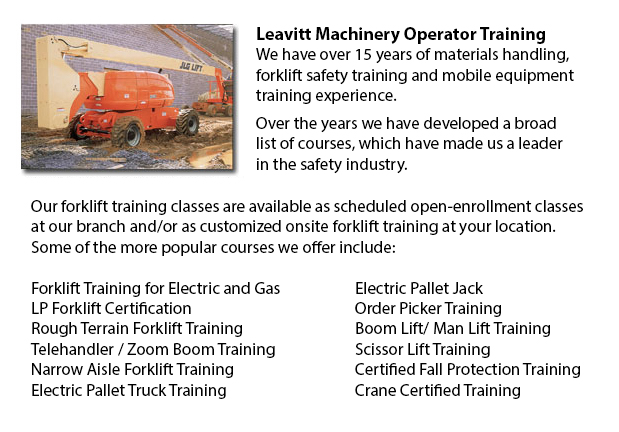
Aerial Platform Training Alberta - Aerial platform lifts might be utilized to accomplish many unique duties performed in hard to reach aerial places. Many of the odd jobs associated with this kind of jack include performing routine preservation on structures with lofty ceilings, repairing phone and utility cables, lifting burdensome shelving units, and trimming tree branches. A ladder could also be used for some of the aforementioned projects, although aerial hoists provide more security and strength when correctly used.
There are many models of aerial lifts available on the market depending on what the task needed involves. Painters sometimes use scissor aerial jacks for example, which are classified as mobile scaffolding, of use in painting trim and reaching the 2nd story and higher on buildings. The scissor aerial hoists use criss-cross braces to stretch out and extend upwards. There is a platform attached to the top of the braces that rises simultaneously as the criss-cross braces elevate.
Cherry pickers and bucket lift trucks are another variety of the aerial lift. Usually, they contain a bucket at the end of an elongated arm and as the arm unfolds, the attached bucket lift rises. Forklifts use a pronged arm that rises upwards as the handle is moved. Boom lift trucks have a hydraulic arm which extends outward and lifts the platform. Every one of these aerial lifts require special training to operate.
Through the Occupational Safety & Health Association, also called OSHA, training programs are on hand to help make certain the workforce satisfy occupational principles for safety, system operation, inspection and upkeep and machine weight capacities. Employees receive certification upon completion of the course and only OSHA certified workers should drive aerial hoists. The Occupational Safety & Health Organization has formed guidelines to uphold safety and prevent injury when using aerial platform lifts. Common sense rules such as not using this piece of equipment to give rides and ensuring all tires on aerial platform lifts are braced in order to prevent machine tipping are observed within the guidelines.
Sadly, figures reveal that in excess of 20 aerial hoist operators pass away each year when operating and nearly ten percent of those are commercial painters. The bulk of these mishaps were triggered by inappropriate tie bracing, therefore some of these may well have been prevented. Operators should ensure that all wheels are locked and braces as a critical safety precaution to stop the device from toppling over.
Marking the surrounding area with noticeable markers need to be used to safeguard would-be passers-by in order that they do not come near the lift. Additionally, markings should be placed at about 10 feet of clearance between any power lines and the aerial lift. Lift operators must at all times be properly harnessed to the lift when up in the air.
-
Crane Training School Alberta
Crane Training School Alberta - The crane training school provides industry-relevant programs. Courses provide trainees with learning results which match current industry demands. Our small class sizes combine theory and hand-on experience. Our quali... More -
Aerial Lift / Boom Lift / Man Lift / Scissor Lift Training in Alberta
Scissor platform lifts are lift truck tables which lift up materials and people and supplies vertically. They are normally utilized in commercial, industrial and construction environments. A common use of scissor lifts is for lowering or lifting cons... More -
Forklift Certification Courses Alberta
Forklift Certification Courses Alberta - Forklift certification really helps to be able to ensure that businesses are following regulations and legislation. Forklift operators must go through certification prior to being permitted to run machinery. I... More -
Manlift Ticket Alberta
Manlift Ticket Alberta - The Elevated Platforms and Manlifts Certification program helps to provide the required training on the safe operating procedures, work practice, rules and regulations regarding the daily activities for the operators of this... More -
Crane Safety Training Alberta
Crane Safety Training Alberta - Both crane driver and their supervisors have to be aware of all the possible problems associated to the operation of an overhead crane. All over North America, there is legislation which provides rules for the safe ins... More -
Fall Protection Training in Alberta
There are high numbers of injuries at work connected to falling and a lot of fall-related deaths reported each year. Most of these instances might have been avoided with better training, better measures in place, and by correctly equipping staff befo... More -
Scissor Lift Ticket Alberta
Scissor Lift Ticket Alberta - Scissor hoists have significantly benefited construction operations in view of the fact that the work that used to need a lot of effort and lots of people, could now be done using the scissor lift and just one individual... More -
Overhead Crane Training Alberta
Overhead Crane Training Alberta - An overhead crane is a huge crane utilized to move and lift large, heavy things that can't be lifted by hand. An overhead crane is typically fixed in place when in use. These machinery are capable of moving huge volu... More

Forklift Training Alberta
TOLL FREE: 1-888-254-6157
forkliftcertificationalberta.com/
Email Us
About Us


